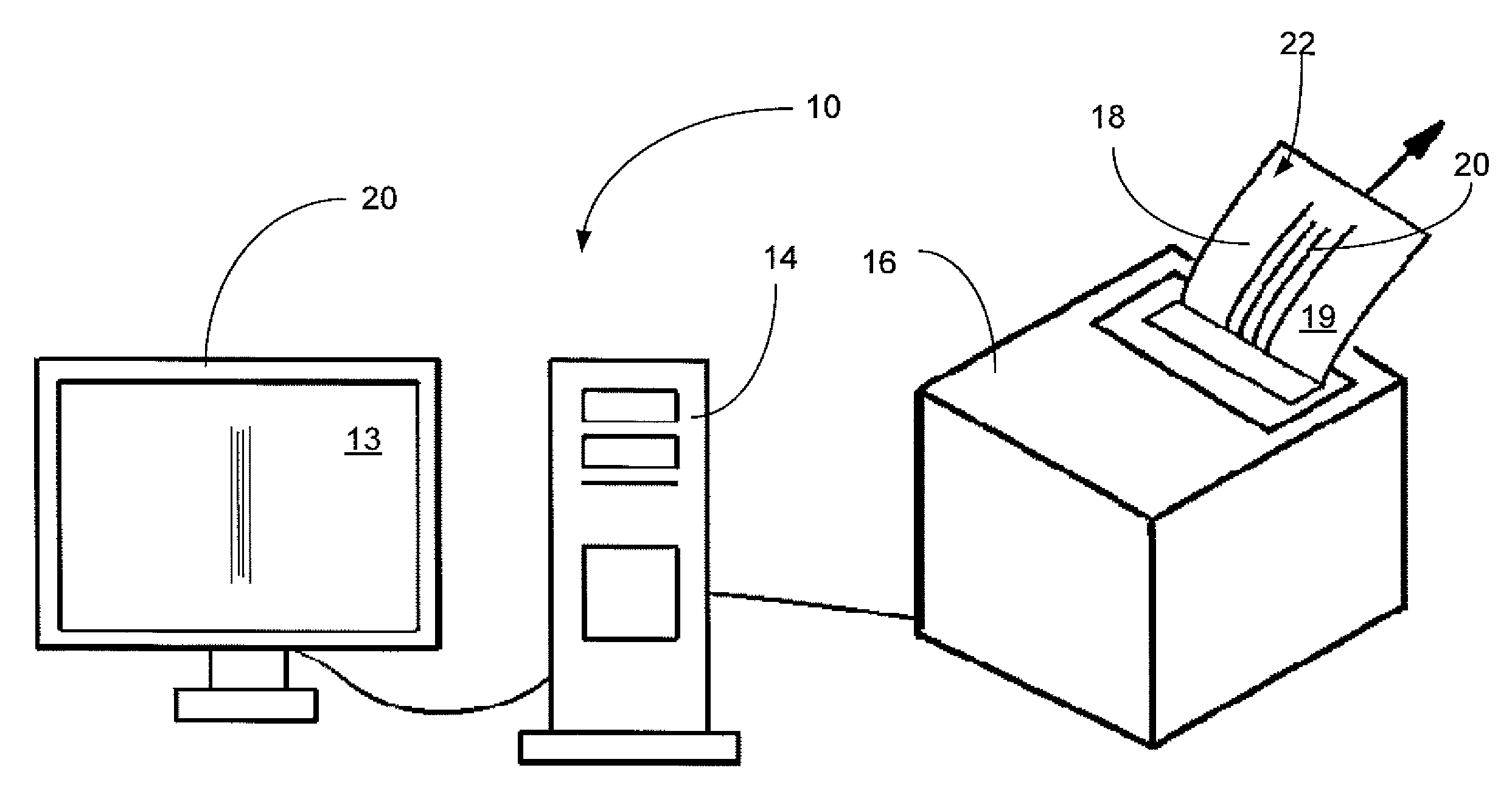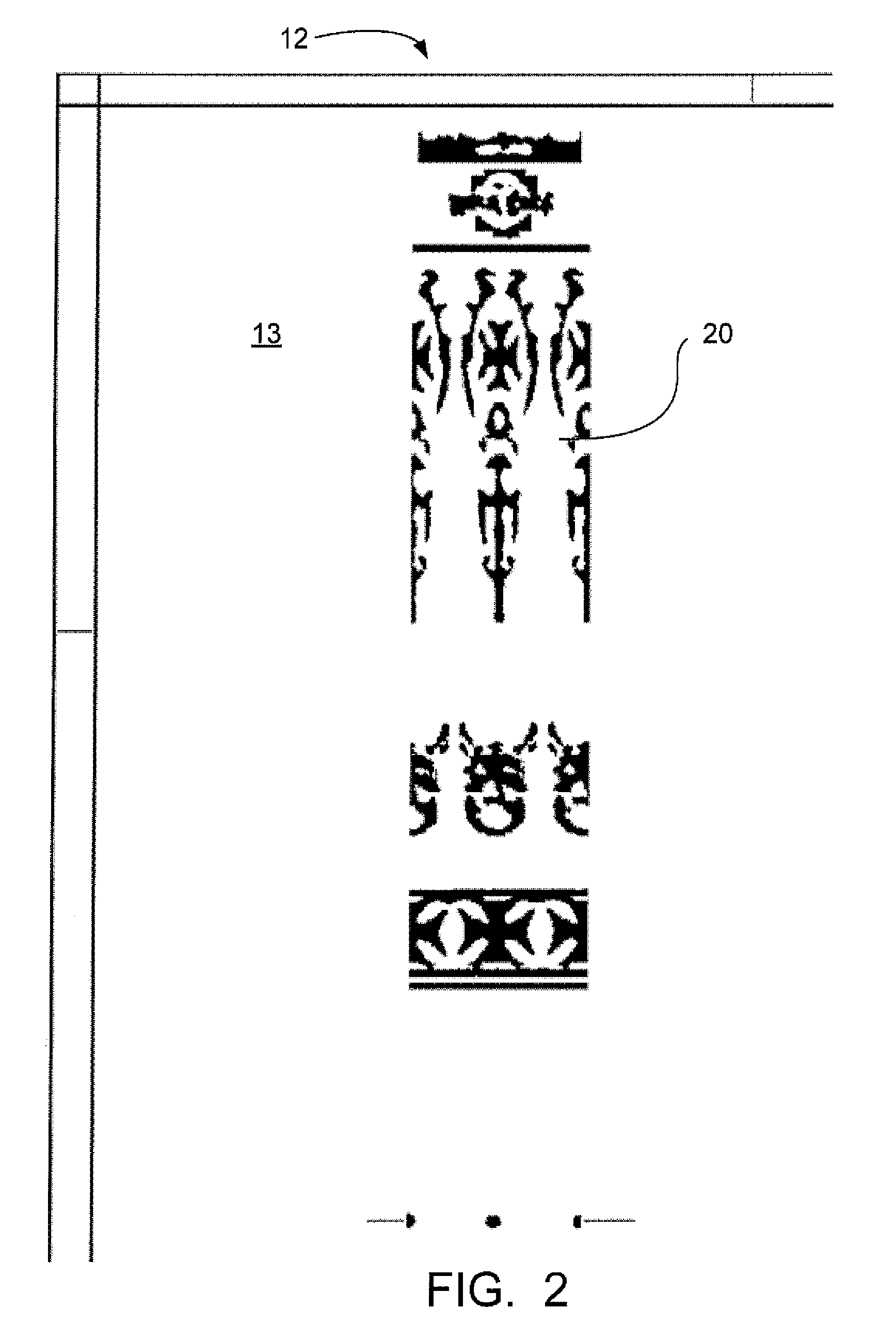Process for producing and applying a laser heat transfer capable of printing on flat, cylindrical, curved, and irregularly shaped objects
a technology of laser heat transfer and laser heat transfer, which is applied in the field of printing on flat, cylindrical, curved or irregular surfaces, can solve the problem that no other process is available, and achieve the effects of low cost, high potential and simple process
- Summary
- Abstract
- Description
- Claims
- Application Information
AI Technical Summary
Benefits of technology
Problems solved by technology
Method used
Image
Examples
Embodiment Construction
[0061]FIGS. 1-15C illustrate the preferred embodiment of the system of the present invention. However, before a discussion of the process itself, as shown in the Figures, applicant would note the following material. In consideration of the failed attempts to produce a satisfactory ink jet drumstick printer, and the knowledge of the potential benefits which might be realized with a laser printer, a serious attempt was made to develop a laser drumstick printer. One approach which was considered was the application of laser toners directly to the surface of the drumstick. In such a process, the application step would be followed by a fusing stage which would involve some sort of heat process (i.e. heated rollers or oven) to melt the toner powders, thereby fusing them to the surface of the drumstick. The major complication of this approach is the fact that conventional laser printers have been designed to accommodate paper, not drumsticks, and the application of the layers of the indivi...
PUM
| Property | Measurement | Unit |
|---|---|---|
| time | aaaaa | aaaaa |
| time | aaaaa | aaaaa |
| cycle time | aaaaa | aaaaa |
Abstract
Description
Claims
Application Information
 Login to View More
Login to View More - R&D
- Intellectual Property
- Life Sciences
- Materials
- Tech Scout
- Unparalleled Data Quality
- Higher Quality Content
- 60% Fewer Hallucinations
Browse by: Latest US Patents, China's latest patents, Technical Efficacy Thesaurus, Application Domain, Technology Topic, Popular Technical Reports.
© 2025 PatSnap. All rights reserved.Legal|Privacy policy|Modern Slavery Act Transparency Statement|Sitemap|About US| Contact US: help@patsnap.com



